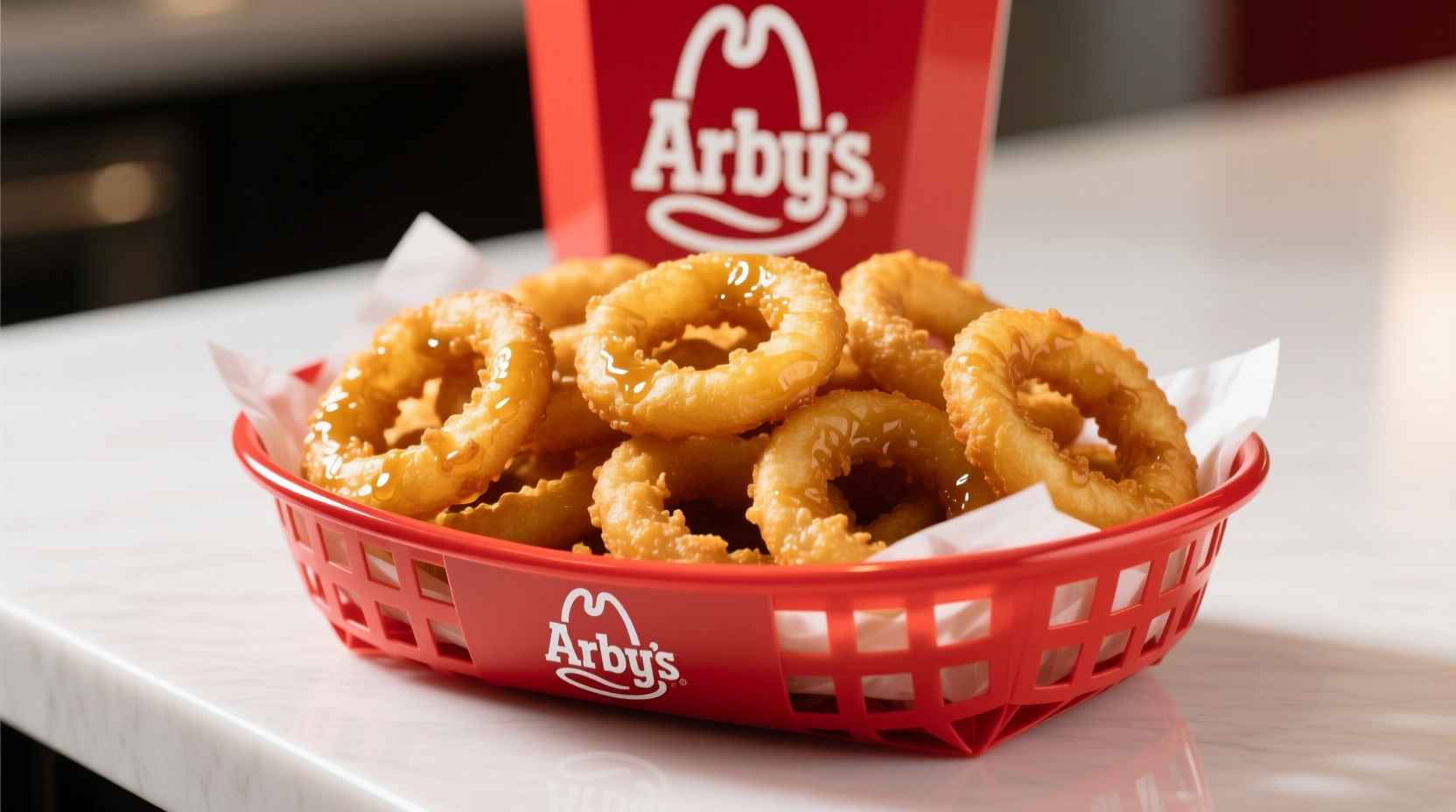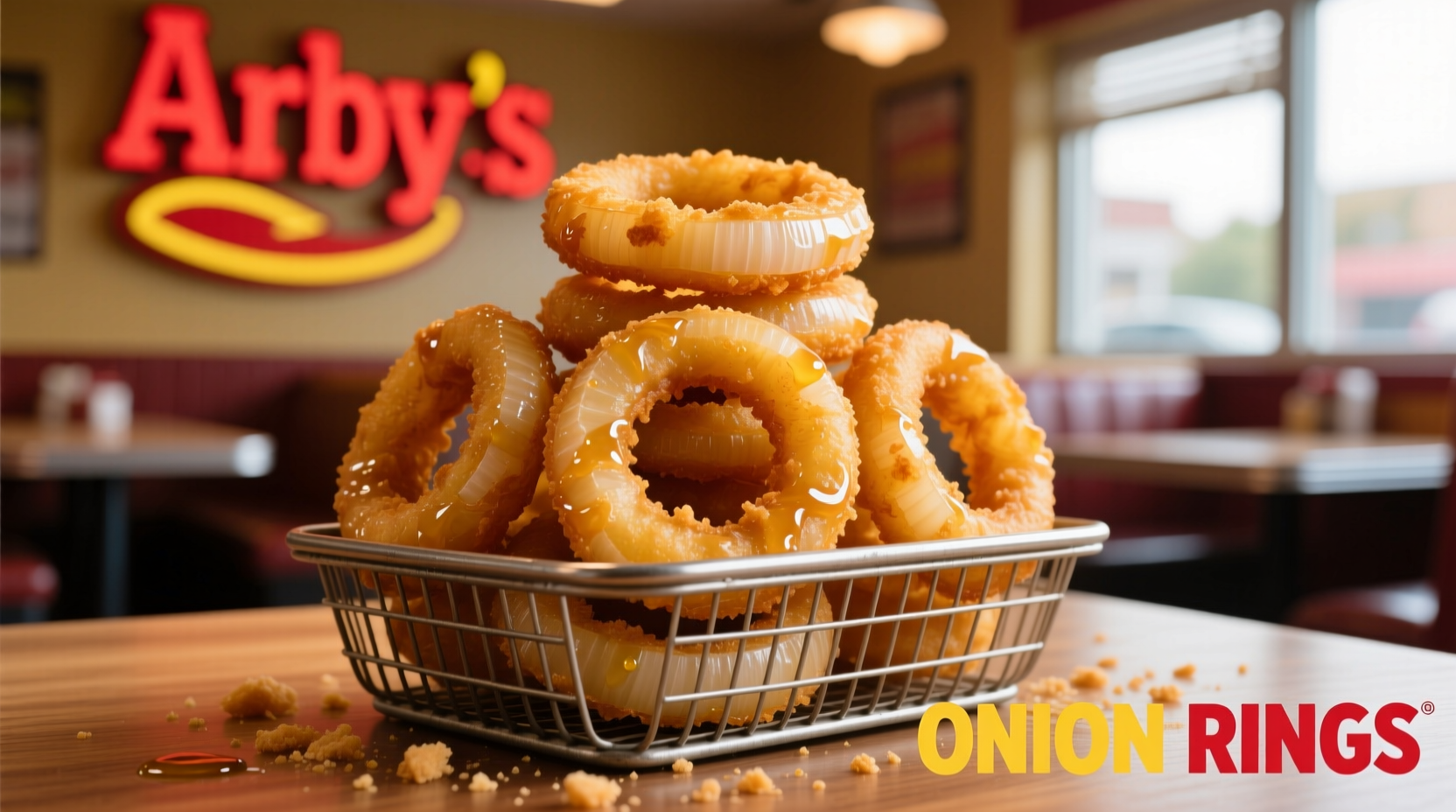If you've ever wondered what makes Arby's onion rings stand out in the fast food landscape, you're not alone. Millions of customers return to this menu staple because of its distinctive crinkle-cut texture, balanced sweetness, and consistent quality. Unlike many fast food items that come and go, Arby's onion rings have maintained their place as a permanent menu offering since 2006, surviving numerous menu changes that have eliminated other items.
The Evolution of Arby's Onion Rings
Understanding the history of Arby's onion rings reveals why they've become such a enduring menu fixture. While onion rings have been part of Arby's offerings in various forms since the 1980s, the current crinkle-cut version debuted in 2006 as part of a menu refresh. This wasn't just another temporary offering—the crinkle-cut design represented a strategic decision to differentiate from competitors.
The timeline shows consistent popularity:
- 1980s-1990s: Standard onion rings offered seasonally
- 2006: Crinkle-cut version introduced as permanent menu item
- 2012: Recipe slightly adjusted for improved crispness
- 2018: Featured in limited-time combo meals due to customer demand
- 2023: Ranked among top 5 most ordered side items nationwide
What's Inside: Ingredient Analysis
While the exact proprietary seasoning blend remains a closely guarded secret, Arby's publicly discloses that their onion rings contain:
- Sweet onions (yellow variety)
- Wheat flour (making them not gluten-free)
- Water
- Yellow corn meal
- Salt
- Leavening agents
- Natural flavors
- Spice blend (undisclosed components)
The crinkle-cut technique serves a functional purpose beyond aesthetics—it creates more surface area for breading adhesion while maintaining structural integrity during frying. This results in that signature crunch that gives way to a tender onion center.

Nutritional Profile and Dietary Considerations
For health-conscious diners evaluating Arby's onion rings nutritional information, a standard serving (7 pieces, approximately 4.2 oz) contains:
| Nutrient | Amount | % Daily Value* |
|---|---|---|
| Calories | 430 | 22% |
| Total Fat | 22g | 28% |
| Saturated Fat | 4g | 20% |
| Trans Fat | 0g | - |
| Cholesterol | 0mg | 0% |
| Sodium | 610mg | 27% |
| Total Carbohydrates | 54g | 20% |
| Dietary Fiber | 2g | 7% |
| Sugars | 4g | - |
| Protein | 6g | - |
*Percent Daily Values are based on a 2,000 calorie diet. Your daily values may be higher or lower depending on your calorie needs. Data sourced from Arby's official nutrition guide (2023).
When considering how are Arby's onion rings cooked, they're prepared in vegetable oil at high temperatures to achieve optimal crispness while preserving the onion's natural sweetness. The double-fry method used in many restaurant kitchens isn't practical for fast food volume, so Arby's has engineered their breading and cooking process to deliver consistent results at scale.
How Arby's Onion Rings Compare to Competitors
Understanding what makes Arby's onion rings different requires comparing them to other fast food options. The crinkle-cut design creates a distinctive texture profile that sets them apart from traditional straight-cut versions.
| Feature | Arby's | Wendy's | Burger King |
|---|---|---|---|
| Cut Style | Crinkle-cut | Straight-cut | Straight-cut |
| Onion Type | Sweet yellow | White | White |
| Breading Thickness | Medium | Thin | Thick |
| Seasoning Profile | Subtle spice blend | Basic salt/pepper | Heavier seasoning |
| Calories (per serving) | 430 | 390 | 480 |
| Availability | Permanent | Permanent | Limited regions |
This comparison reveals why Arby's onion rings vs Wendy's onion rings is a common consideration among fast food enthusiasts. Arby's distinctive crinkle-cut provides more surface area for seasoning while maintaining structural integrity better than straight-cut versions.
Customer Reception and Practical Enjoyment Tips
Based on aggregated customer feedback from third-party review platforms (2022-2023), Arby's onion rings receive consistent praise for their:
- Crisp texture that holds up until the last bite
- Balanced sweetness without overpowering onion flavor
- Consistent quality across locations
- Perfect pairing with dipping sauces
For the best experience with Arby's onion rings ingredients list considerations in mind, try these practical tips:
- Order them fresh—ask staff to prepare a new batch if the current ones look soggy
- Pair with Arby's signature sauce or ranch for optimal flavor contrast
- Enjoy immediately while hot for maximum crispness
- Consider sharing if watching calorie intake—a half-order still provides the full flavor experience
Many customers wonder are Arby's onion rings made with real onions, and the answer is yes—they use actual sweet yellow onions, not onion-flavored batter. The visible onion strands in the finished product confirm this, distinguishing them from some competitors who use more batter-heavy formulations.
Practical Considerations for Different Dietary Needs
For those evaluating are Arby's onion rings gluten free, the answer is no—they contain wheat flour in the breading. Customers with gluten sensitivity should avoid them, as Arby's kitchens don't maintain separate gluten-free preparation areas that would prevent cross-contamination.
Vegans will also find these don't fit dietary requirements, as the breading contains dairy derivatives. However, they are vegetarian-friendly for lacto-ovo vegetarians.
When planning your meal, consider that onion rings work best as a complement to sandwiches rather than a standalone meal. The 430 calories per serving represents about 20% of a typical 2,000-calorie daily intake, making them a reasonable occasional treat when balanced with other menu choices.











 浙公网安备
33010002000092号
浙公网安备
33010002000092号 浙B2-20120091-4
浙B2-20120091-4